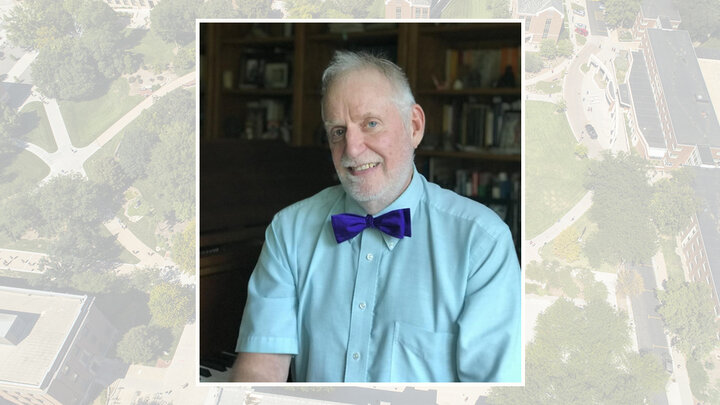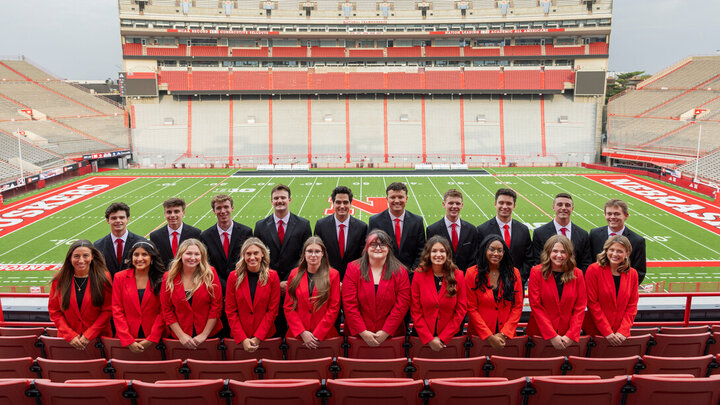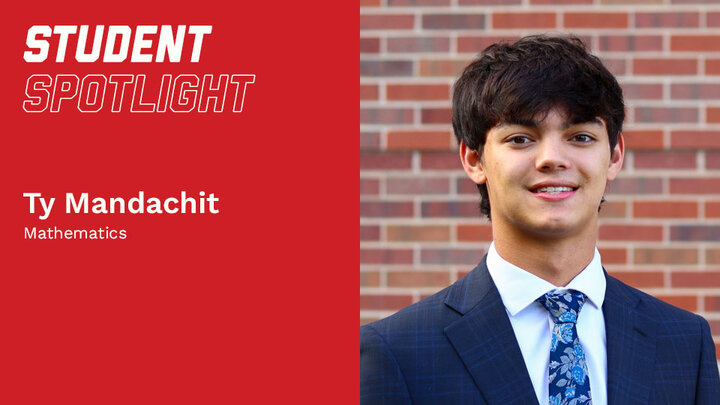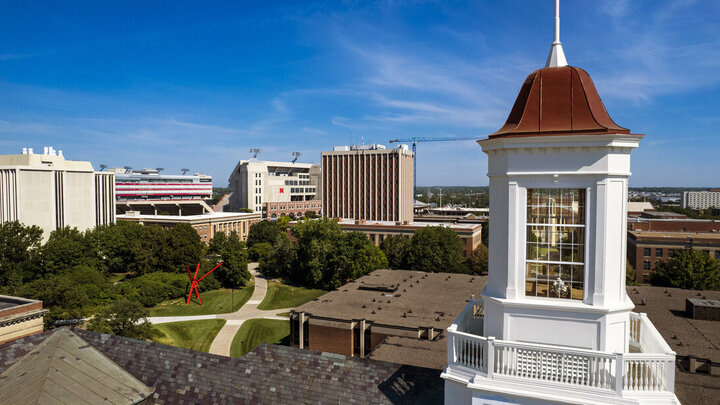Professor Donald Schneider has been teaching the yearlong sophomore introductory class for astronomy majors at Pennsylvania State University for over a quarter-century.
Each fall he encounters dozens of talented students who, previously, were not challenged in their classes, cruising to top grades without much effort.
In September, they bitterly complain to him that the homework is “impossible.”
However, after a couple of months, these students discover that, with some effort, they can conquer these seemingly insurmountable questions.
“One of the most rewarding aspects of my position is when former students stop by my office and comment on how grateful they were for my class as it caused them to reach their full potential,” said Schneider, a Nebraska native who graduated from the University of Nebraska–Lincoln in 1976 as a Chancellor’s Scholar with majors in mathematics and physics (astronomy option).
Schneider, the department head of astronomy at Penn State, has published over 950 peer-reviewed articles on a variety of subjects, from asteroids and exoplanets to the large-scale structure and evolution of the universe.
After UNL, he entered the graduate program in astronomy at the California Institute of Technology. Schneider received his Ph.D. under supervisor James Gunn in 1982, and remained at Caltech for three years as a research fellow, as an assistant to Maarten Schmidt. Schneider and a fellow Caltech postdoc invented a new technique to measure the distances to galaxies in the mid-1980s.
His Ph.D. thesis involved one of the first uses—if not the first—of a new electronic detector, called a CCD, for an astronomical survey.
“Since at the time there was essentially no software available to process these digital images, a fellow graduate student and I wrote an image processing system that was used in many astronomical projects. This work led to the Palomar Quasar Survey, which I performed with Professors Schmidt and Gunn; this effort found the most distant known object (at the time) in the universe,” Schneider said. “The techniques developed for the survey were the basis for the Sloan Digital Sky Survey, which has been an exceptionally productive program for the past two decades.”
In 1982, Schneider also was a member of the team that obtained the first image of Comet Halley as it approached the inner solar system for its 1986 passage by the sun.
In 1985, Schneider received an appointment as a long-term member at the Institute for Advanced Study in Princeton, New Jersey, working with John Bahcall. With Professor Bahcall, he worked on several projects with the Hubble Space Telescope, and was responsible for the development of the software required to process the data for their programs.
Schneider remained at the IAS until joining the faculty at Penn State in 1994 as an associate professor. Since becoming department head in July 2011, Schneider said his greatest satisfaction has been the outstanding talent that he has been able to recruit to the faculty.
“I had not taught a course until I was at Penn State, and was somewhat apprehensive about how I would fare. I quickly found that I enjoyed teaching immensely,” said Schneider, who in 2006 received Penn State’s Eberly College of Science’s highest teaching award.
Decades later, teaching during a global pandemic has brought its fair share of new challenges. Schneider has adopted what is termed “synchronous remote instruction”: during the scheduled lecture times, he delivers the classes over Zoom.
“This fall both the students and I have adapted much better to this mode than in the spring, but the video teaching is, in my opinion, not as effective as the in-person lectures,” Schneider said. “I did immediately learn one important lesson: when the students’ microphones are muted and their cameras are not running, do not tell jokes. I assure you that this action will produce a most painful experience.”
Born in Hastings, Nebraska, and raised on a farm near Heartwell, Schneider attended Heartwell school through sixth grade and then junior and senior high at Minden.
Science always piqued his interest. Through first grade he was fascinated by dinosaurs and wanted to be an archeologist, but viewing the dark Nebraska skies, combined with the excitement of the race to the moon (John Glenn went into orbit when Schneider was in first grade) and the first interplanetary missions, inspired him to become an astronomer. In fifth grade, a fascination with nuclear physics nearly steered him another direction, but in sixth grade, he made his decision to pursue astronomy for a career.
“My father was unimpressed with this announcement, asking, ‘Do they actually pay people to do this job?’” said Schneider.
During his senior year at Minden, Schneider participated in the Westinghouse Science Talent Search and received ninth place at the competition’s finals in Washington, D.C.
After meeting Professor Kam-Ching Leung, the head of UNL’s astronomy program, Schneider, a first generation college student, decided to attend UNL with a four-year Regents Scholarship. He completed his undergraduate honors thesis on binary stars with Leung.
During his first semester at Nebraska, Schneider took Differential Equations with Professor Gordon Woodward and later Matrices with Professor Jim Lewis. Schneider fondly remembers these courses, as well as his Advanced Calculus and Tensor Calculus experiences with the department. He recalls not only the high quality of teaching he received but also the high quality of the other students in Lewis’s matrices course.
“I’ve rarely been surrounded by so much talent,” said Schneider. “I don’t know where I ranked in the class, but if I managed to be in the top ten, I would consider that one of my most impressive achievements as an undergraduate.”
Particularly rewarding was his two-year experience as an undergraduate mathematics counselor. For two evenings a week, in the dining areas of the dorm complexes, Schneider would assist students with questions they had involving their math courses.
In 2002, Schneider came back to UNL to visit the math department and deliver the public talk “Fire and Ice,” which referred to the two possible fates of the universe: a halt to the expansion and a collapse into a fiery pit, or a perpetual expansion into a frozen future. “Based on current observations, I would recommend purchasing a parka,” Schneider said.
Schneider also recommends to college students that they should pursue a career that brings them joy and satisfaction. He emphasized that no matter how talented you are, if you wish to undertake an academic or research career, you must realize that you are facing global competition.
“We Americans frequently state that one’s future is in your own hands, and to some extent that is true,” Schneider said, “but I could never have had my career without the exceptional and caring teachers at Nebraska in the math and the physics departments, the gifted research supervisors with whom I had the great fortune to interact, or the many colleagues who have enriched my life.”




